Games PC MICROSOFT FLIGHT SIMULATOR 2000 User Manual

Pilot’s Handbook
p a g e 0 2 i s b l a n k
Information in this document is subject to change without notice. Except as otherwise noted, the example organizations, people, and events depicted herein are fictitious. No association with any real organization, person, or event is intended or should be inferred. Complying with all applicable copyright laws is the responsibility of the user. Without limiting the rights under copyright, no part of this document may be reproduced, stored in, or introduced into a retrieval system, or transmitted in any form or by any means (electronic, mechanical, photocopying, recording, or otherwise), or for any purpose, without the express written permission of Microsoft Corporation.
Microsoft may have patents, patent applications, trademarks, copyrights, or other intellectual property rights covering subject matter in this document. Except as expressly provided in any written license agreement from Microsoft, the furnishing of this document does not give you any license to these patents, trademarks, copyrights, or other intellectual property.
© 1983–1999 Microsoft Corporation. All rights reserved.
DirectInput, Microsoft, MS-DOS, MSN, SideWinder, Windows, and Windows NT are either registered trademarks or trademarks of Microsoft Corporation in the US and/or other countries.
Microsoft Flight Simulator scenery designed for Microsoft Corporation by MicroScene, Inc. under contract and produced by Microsoft Corporation.
The AOPA wings logo is a registered service mark of the Aircraft Owners and Pilots Association.
Jeppesen, Jeppesen Sanderson, JeppView, and NavData are registered trademarks of Jeppesen Sanderson, Inc. SIMCharts is a trademark of Jeppesen Sanderson, Inc.
FlightSafety International is a registered trademark of FlightSafety International, Inc.
Other product and company names mentioned herein may be the trademarks of their respective owners.
This product is for entertainment purposes only and shall not be used for training purposes. It is not part of an approved training program under the standards of the FAA or any other regulatory agency.
Aeronautical sectional charts provided by National Ocean Service Office of Aeronautical Charting and Cartography
Terrain images supplied by: Aeromap U.S.A; Eurosense Belfotop N.V.; Intrasearch Inc.; National Aerial Resources; Walker and Associates.
Photo Sources: Aircraft Owners and Pilots Association, King Schools, Nick Gunderson/Tony Stone Images, George Hall/Corbis, Kenneth Jarecke/Contact Press Images/PNI, Mike Fizer/AOPA
p a g e 0 4 i s b l a n k

Microsoft Flight Simulator 2000 Pilot’s Handbook
Section I
Chapter 1 Before You Fly ........................................................................ |
1 |
Flight Simulator 2000 is designed to work on many different kinds of computers, with many different kinds of accessories. In this chapter, you’ll learn how to install the software, set up your accessories, and configure your system for optimal performance.
Chapter 2 Finding Information .............................................................. |
7 |
From in-flight checklists to aircraft histories, it’s easy to find the information you’re looking for. In Flight Simulator 2000, facts and assistance are always close at hand.
Chapter 3 Exploring the Features ....................................................... |
11 |
With more features than ever before, Flight Simulator 2000 will keep even experienced pilots busy for hundreds of hours. This chapter provides the details.
Chapter 4 Having Some Fun ................................................................ |
17 |
There’s more to Flight Simulator 2000 than meets the eye. From ridge soaring in a glider to flying upside down, the sky’s the limit. Here are some of the possibilities to set you free.
Chapter 5 Expanding Your Hobby ....................................................... |
27 |
Flight Simulator 2000 is more than just software on your desktop. Learn about the Flight Simulator Web site, add-on products, virtual airlines, and how Flight Simulator 2000 can complement real-world pilot training.
Section II
Chapter 6 Getting Certified .................................................................. |
31 |
Real-world pilots go through a challenging certification process, and you can do the same by completing the Flight Simulator 2000 Tutorials, Lessons, and Checkrides. Follow this chapter’s step-by-step curriculum to earn Flight Simulator 2000 pilot certificates and ratings.
Chapter 7 Learning to Fly with Rod Machado ................................. |
41 |
Getting off the ground has never been easier! Renowned aviation educator and humorist Rod Machado teaches you the basics in these step-by-step, hands-on Flight Simulator 2000 Tutorials.
v

Section III
Chapter 8 The Fleet........................................................................... |
163 |
The Flight Simulator 2000 fleet offers a wide range of flight experiences for pilots of all levels. Before heading out to the flightline, read more about the real aircraft and the people who built them.
Appendices |
|
Appendix A Charts ............................................................................ |
191 |
Appendix B Glossary ........................................................................ |
219 |
Appendix C Recommended Reading ............................................ |
225 |
Appendix D Microsoft Product Support Services ...................... |
227 |
Index |
|
Pilot’s Handbook Index .................................................................... |
231 |
|
vi |
|
|
|
M i c r o s o f t |
|
|
|
|
|
|
F l i g h t S i m u l a t o r 2 0 0 0 |
||||||||||||||||||||||||||
|
|
|
|
|
|
|
|
|
|
|||||||||||||||||||||||||||||
|
|
|
|
|
|
|
|
|
||||||||||||||||||||||||||||||
|
|
|
|
|
|
|
|
|
|
|
|
|
|
|
|
|
|
|
|
|
|
|
|
|
|
|
|
|
|
|
|
|
|
|
|
|
|
|
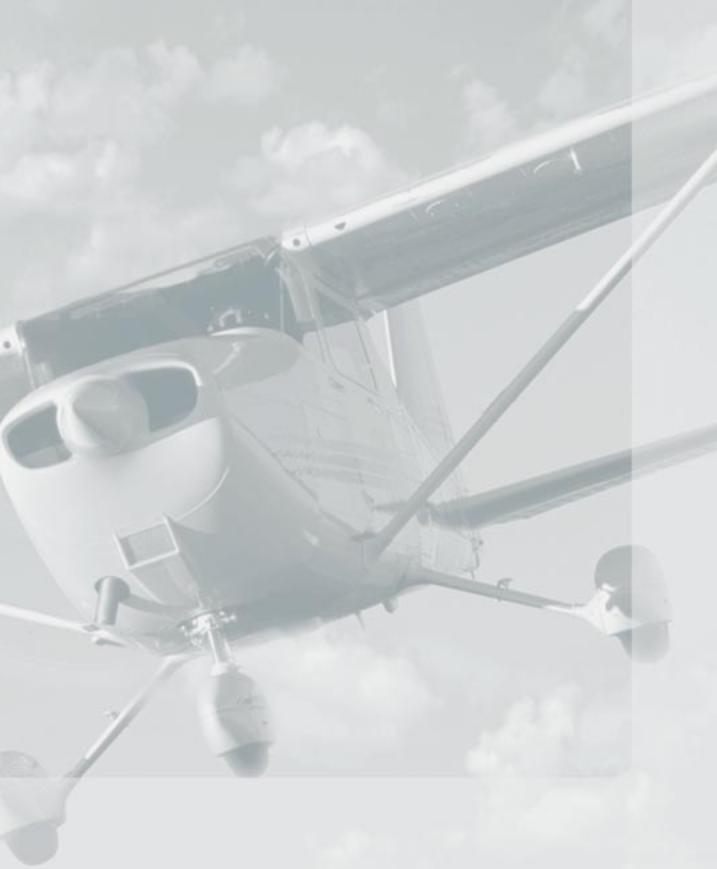
Before
You Fly
1one chapter

Whether you’re a rookie, a Microsoft® Flight Simulator veteran, or a licensed pilot, you probably can’t wait to climb into the cockpit. Before you start flying Microsoft Flight Simulator 2000 though, there are a few things you need to do. This chapter tells you how to get started.
Installing Flight Simulator
1.Turn on your computer and start Microsoft Windows® 95 or later.
2.Insert Flight Simulator 2000 Disc 1 into your CD-ROM drive.
3.Follow the instructions on the screen.
If your computer doesn’t support automatic installation, follow these steps:
1.Click Start on the taskbar.
2.Point to Settings, and then click Control Panel.
3.Double-click Add/Remove Programs.
4.On the Install/Uninstall tab, click Install.
5.Follow the instructions that appear on your screen.
During Setup you’ll have the option of selecting a Minimum, Typical, or Custom installation. If you need to conserve hard disk space on your computer, choose the Minimum setup option. If you want to optimize flying performance, choose Typical. If you are an advanced user and want to choose exactly what gets installed, choose
Custom.
Note: Installation may require one or more of the Flight Simulator compact discs, depending on the options you choose.
Starting Flight Simulator
1.Insert Flight Simulator 2000 Disc 1 into your CD-ROM drive.
2.Click Start, point to Programs, point to
Microsoft Games, point to Flight Simulator 2000, then click Flight Simulator 2000.
-or-
Double-click the Flight Simulator 2000 icon on the Windows desktop.
Note: You’ll always need to have Flight Simulator 2000 Disc 1 in the drive when you start Flight Simulator 2000.
When you start Flight Simulator 2000, you’ll see the opening screen, from which you can select one of the following options:
·Getting Started: Watch an introductory video, produced by King Schools, that explains how to get into the air quickly.
·What’s New: Learn about the new features that make Flight Simulator 2000 “As Real As It Gets.”
·Flying Lessons: Start with an Intro Flight, just like you would in the real world. Continue with lessons linked to the Tutorials in Chapter 7 of this Pilot’s Handbook. You’ll be amazed at how much you’ll learn—and how much fun you’ll have!
·Fly Now!: Hop into the cockpit and start flying. When you first start Flight Simulator, you’ll be flying the Cessna 182S out of Meigs Field in Chicago. Later, you can change the “default flight” to any airplane and flight conditions you want.
|
2 |
|
|
|
M i c r o s o f t |
|
|
|
|
|
|
F l i g h t S i m u l a t o r 2 0 0 0 |
||||||||||||||||||||||||||
|
|
|
|
|
|
|
|
|
|
|||||||||||||||||||||||||||||
|
|
|
|
|
|
|
|
|
||||||||||||||||||||||||||||||
|
|
|
|
|
|
|
|
|
|
|
|
|
|
|
|
|
|
|
|
|
|
|
|
|
|
|
|
|
|
|
|
|
|
|
|
|
|
|
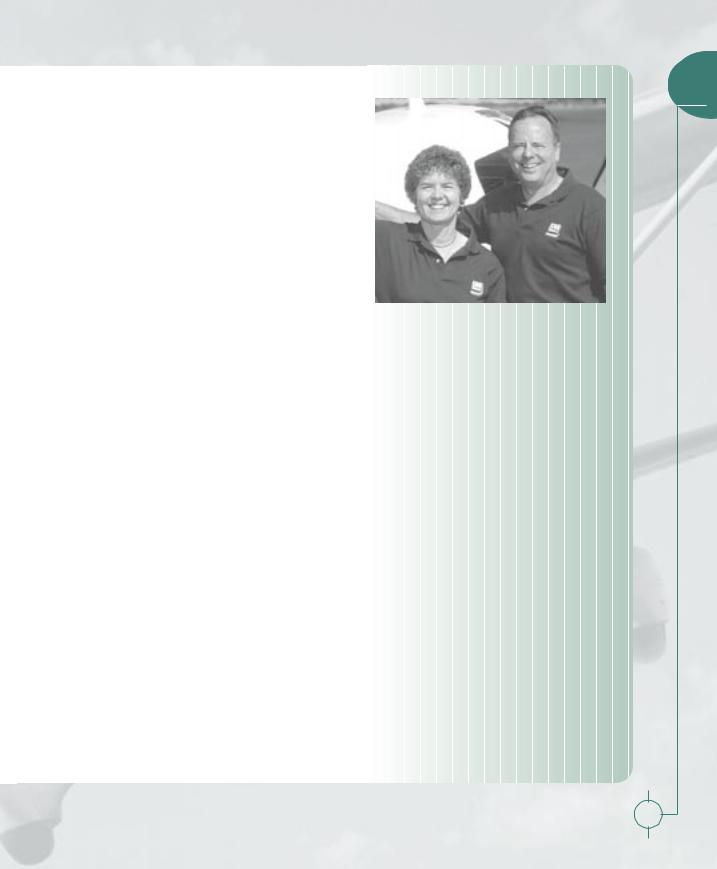
Setting Up and Using
Joysticks and Other
Game Controllers
Flight Simulator 2000 is more realistic when you use a joystick, yoke, or other controller. You can fly more precisely, and the buttons and controls make it easy to change views, adjust the throttle, extend or retract the landing gear and flaps, and operate other aircraft controls.
Flight Simulator 2000 is compatible with joysticks, yokes, gamepads, and other controllers supported by Microsoft Windows and DirectInput®. Use the device that works best for you as your primary control; it can be customized to suit your needs. Different products have different configurations, so refer to your controller’s documentation for its button assignments.
Before you fly, make sure your joystick or other controller is:
·plugged into your computer
·set up in Microsoft Windows
·calibrated properly
·enabled in Flight Simulator 2000 (on the Options menu, point to Controls, and click
Enable Joystick)
Also make sure you have the latest device drivers. If in doubt, download and install them from the manufacturer’s Web site.
For more information about setting up and using game controllers, see the Simulator Help section of onscreen Help.
1
John and Martha King,
King Schools
“Clarify, Simplify, and Make it Fun!” That’s the mission of King Schools, founded by John and Martha King. King Schools has been providing aviation software and video instructional materials for over 17 years. Nearly one-third of all pilots in the United States have used King Schools courses to attain their licenses.
John and Martha have the distinction of being the first husband and wife team (and Martha, the first woman) to have every possible category rating, class rating, and instructor’s certificate offered by the FAA. They made their mark by developing learning materials that express their enthusiasm and share it with others. Click the Getting Started button on the opening screen to see a short video in which the Kings explain how to get up and flying in Flight Simulator.
B e f o r e Y o u F l y |
|
|
3 |
|

Using the Mouse
As you fly, you can use the mouse to manipulate the buttons, knobs, and levers in the cockpit. Just click the appropriate control. Some controls are toggles (for example, clicking the landing gear lever once retracts the wheels; clicking it again extends them). Other controls, such as the throttle and trim wheel, move through a series of positions. You can drag these controls with the mouse, much as you would move them with your hand in a real airplane.
If you don’t own a joystick, yoke, or gamepad, you can also use the mouse as the primary flight control. Rightclick anywhere on the aircraft instrument panel and choose Mouse as
Yoke from the menu that appears. Any movement you make with the mouse controls the aircraft just like a joystick would. (Moving the mouse to the left makes the aircraft bank left, and so on.) To return to using the mouse to manipulate cockpit controls, right-click on the panel again.
Using the Keyboard
The keyboard is often the best way to view and operate certain aircraft controls and to choose commands and options. By learning which keys do what you can be more efficient in the Flight Simulator cockpit. And although it’s best to use a joystick or yoke as the primary flight control, you can fly the aircraft by using the keyboard to control the ailerons, elevator, and rudder.
The Key Commands tab on the Kneeboard in Flight Simulator (press F10 to display the Kneeboard) features a list of the basic keyboard
commands you’ll need. The same information is on the back cover of this book. The complete list of commands is in the Simulator Help section of Help.
Customizing the Controls
In real aircraft, each button, lever, or knob serves a specific function. In Flight Simulator, you can customize the joystick and keyboard commands so that your simulated cockpit works the way you like best. For example, you could reassign the key used to extend and retract the landing gear from the G key to another. On the Options menu, point to Controls, and click Assignments. To adjust how sensitive your joystick is, on the Options menu, point to Controls, then click Sensitivities.
Note: For assistance with any Flight Simulator 2000 dialog box, click the ? button, or right-click any item and choose What’s This?.
|
4 |
|
|
|
M i c r o s o f t |
|
|
|
|
|
|
F l i g h t S i m u l a t o r 2 0 0 0 |
||||||||||||||||||||||||||
|
|
|
|
|
|
|
|
|
|
|||||||||||||||||||||||||||||
|
|
|
|
|
|
|
|
|
||||||||||||||||||||||||||||||
|
|
|
|
|
|
|
|
|
|
|
|
|
|
|
|
|
|
|
|
|
|
|
|
|
|
|
|
|
|
|
|
|
|
|
|
|
|
|

Making Flight Simulator
2000 Really Fly
When talking about a flight simulation’s graphics, quality refers to how real the images look on the screen, and performance refers to how quickly and smoothly the images move. Higher quality typically means decreased performance, since displaying complex, richly-detailed, threedimensional graphics puts a heavy load on your system. If you’re not seeing the graphics quality and performance you expect, this section explains some choices and tradeoffs you can make to optimize your experience.
Improving both quality and performance
To achieve maximum quality and performance, consider the following options:
 Shut down other applications
Shut down other applications
When you’re flying, you probably won’t be using other applications such as word processors and email programs, so close them to free up more of your computer’s brainpower for Flight Simulator.
 Get a 3-D graphics accelerator card
Get a 3-D graphics accelerator card
To display Flight Simulator graphics, your computer must convert a three-dimensional world into a two-dimensional image. A 3-D graphics accelerator makes this task easier, by taking some of the burden away from the main processor. This leaves the main processor more resources to handle the simulation’s flight model. The result? Better performance and graphics quality.
If you have a 3-D card, make sure you:
·set the display options in Flight Simulator to take full advantage of it (see “Change display options,” later in this chapter)
·download and install the latest drivers from the manufacturer’s Web site
1
If you have problems getting your 3-D card to work properly, make sure you’ve read the Flight Simulator 2000 Readme file and the card manufacturer’s documentation.
 Get more RAM
Get more RAM
Random access memory (RAM) is your computer’s short-term memory. Generally, the more of it there is, the faster your computer’s brain (the CPU) can process data. Your computer needs to have at least 32 megabytes (MB) of RAM to run Flight Simulator 2000.
 Get a faster processor
Get a faster processor
Although Flight Simulator 2000 will run on a Pentium 166 machine, a faster processor will provide better performance.
Making a tradeoff between quality and performance
Choosing between quality and performance depends on what you want to do. If you want to spend an evening reading signs and billboards as you fly the Bell 206B JetRanger III helicopter down the glittering streets of Las Vegas, then you’re probably willing to sacrifice a little performance for a better view. If, however, you want to test your instrument flying skills by guiding the Concorde into Heathrow in a storm, then smooth movement of the aircraft and the instruments will take precedence over scenery details. No matter what kind of hardware you have, you can make tradeoffs between graphics quality and performance.
Try the following options to find the balance between quality and performance that’s right for your needs.
 Watch your windows
Watch your windows
Flight Simulator runs in a window. The simulation’s views and instrument panels are also
B e f o r e Y o u F l y |
|
|
5 |
|

windows. Increasing the size of windows and displaying multiple windows simultaneously decreases performance, so use as few windows as possible and keep them as small as you can (with the exception of Full Screen mode, described below).
Change the resolution
Depending on the type of video card and monitor you have, you can run Flight Simulator 2000 at a variety of screen resolutions. The instrument panels were optimized for readability in 640 x 480 and 1024 x 768 screen resolutions. A screen resolution of 1024 x 768 will provide the best overall graphics quality. Note though that as you increase resolution to see more detail, you may notice a decrease in performance. Experiment with different resolutions to find the best combination of detail and performance for your system. For more information about adjusting the screen resolution on your computer, on the Windows Start menu, click Help, and look up “resolution.”
 Use Full Screen mode
Use Full Screen mode
Full Screen mode makes the Flight Simulator window fill the entire screen (no menu bar or taskbar) and will likely improve performance. To toggle between Full Screen and Normal modes, press ALT+ENTER, or on the Views menu select or deselect Full Screen. To bring up the menu bar while in Full Screen mode, press ALT. To set the resolution used in Full Screen mode, click the Options menu, point to Settings, and click
Display.
Change display options
One way to improve performance is to change the display options in Flight Simulator. Each option has a different effect, and changes you make apply to all flights. Turning an option on or off is
noticeable only when you see an effect related to that option on the screen. For example, reducing the scenery complexity won’t have much effect if you’re flying in the clouds.
To change display options, click the Options menu, point to Settings, and click Display.
 Change sound preferences
Change sound preferences
Depending on your machine, changing sound preferences (or turning sound off) may improve performance. To change sound options, on the Options menu, point to Settings, and click
Sound.
 Change visibility and other weather settings
Change visibility and other weather settings
Generally speaking, the less scenery you see out of the window, the better the performance will be. Reducing visibility is a simple way to improve performance. On the World menu, click Weather.
 Monitor the frame rate
Monitor the frame rate
Monitoring the frame rate (the number of times the screen is redrawn each second) is an easy way to assess Flight Simulator’s performance.
Press SHIFT+Z twice to display the frame rate counter. When you try the options listed above, check the frame rate to see whether it has improved. Remember though: it’s how the simulation looks and feels to you that matters most.
Experiment
The best way to make Flight Simulator really fly on your machine is to experiment. Change something, then see if things look or feel any different. Read the Readme file in the Flight Simulator directory on your hard drive for additional tips.
|
6 |
|
|
|
M i c r o s o f t |
|
|
|
|
|
|
F l i g h t S i m u l a t o r 2 0 0 0 |
||||||||||||||||||||||||||
|
|
|
|
|
|
|
|
|
|
|||||||||||||||||||||||||||||
|
|
|
|
|
|
|
|
|
||||||||||||||||||||||||||||||
|
|
|
|
|
|
|
|
|
|
|
|
|
|
|
|
|
|
|
|
|
|
|
|
|
|
|
|
|
|
|
|
|
|
|
|
|
|
|
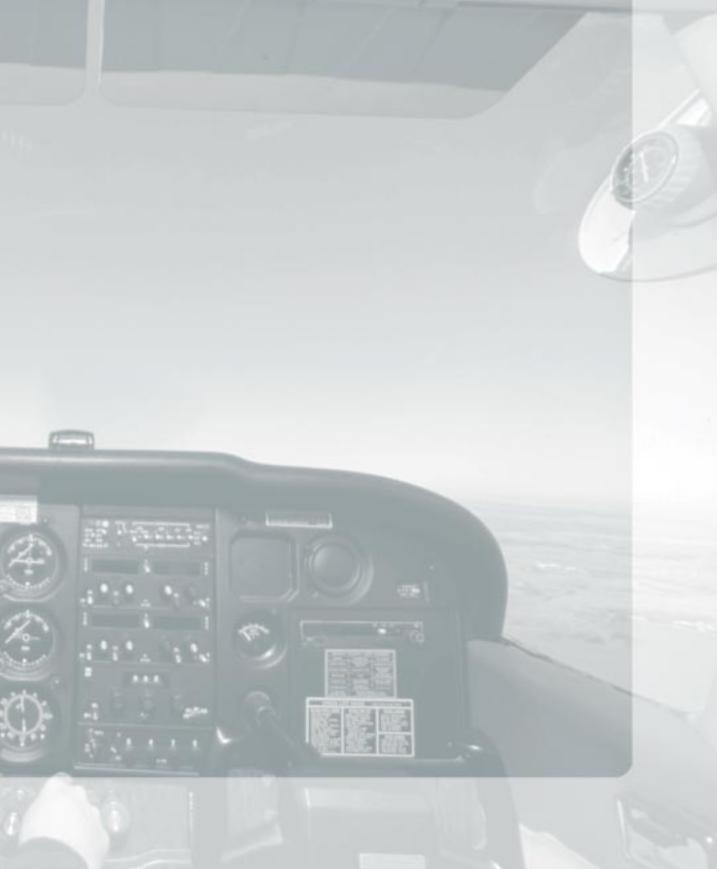
Finding
Information
2two chapter

Let’s face it, flying is a complex endeavor. The information and assistance provided with Microsoft® Flight Simulator 2000 let you spend more time doing what you want—flying—and less time searching for the information you need to do it. This chapter helps you find the information you’re looking for.
Pilot’s Handbook
This Pilot’s Handbook gives you an overview of Flight Simulator 2000 and suggests ways you can
use it to learn about aviation, practice what you already know, or just have fun. Interspersed with information about getting up and running, learning to fly, and using the simulator, are interesting facts about aviation history. Think of the Pilot’s Handbook as the view from 30,000 feet; if you need detailed procedures and specifications, use Flight Simulator Help.
Flight Simulator Help
Want to learn about Flight Simulator commands and techniques? Aviation? The Flight Simulator 2000 aircraft? Aviation terminology? Look in Flight Simulator Help, which you can access from the Help menu.
Just like surfing the Web with a browser, you can move from topic to topic using the navigation bar at the top of the Help screen or by clicking “hot” text. Flight Simulator Help is divided into four sections: Simulator Help, Aviation Articles, Aircraft Information, and Glossary.
Simulator Help |
Want to choose another airplane, add some turbulence, or figure out |
|
what all those gauges in the cockpit are for? To learn about Flight |
|
Simulator 2000 menus, screens, buttons, knobs, and levers, check |
|
out Simulator Help for step-by-step procedures. |
|
|
Aviation Articles |
Want to learn more about aviation? Aviation Articles explain |
|
subjects from the basics of flight to complex aerobatic maneuvers. |
|
The Aircraft Owners and Pilot’s Association (AOPA) contributed many |
|
of the articles, which are of interest to novices and real-world pilots |
|
alike. Videos and animations help explain it all. |
|
|
Aircraft Information |
Looking for data about the aircraft in the Flight Simulator 2000 fleet? |
|
The Aircraft Information section provides statistics, cockpit |
|
diagrams, and more. |
Glossary |
Not sure what an unfamiliar aviation or Flight Simulator term means? |
|
Look in the comprehensive Glossary. |
|
|
|
8 |
|
|
|
M i c r o s o f t |
|
|
|
|
|
|
F l i g h t S i m u l a t o r 2 0 0 0 |
||||||||||||||||||||||||||
|
|
|
|
|
|
|
|
|
|
|||||||||||||||||||||||||||||
|
|
|
|
|
|
|
|
|
||||||||||||||||||||||||||||||
|
|
|
|
|
|
|
|
|
|
|
|
|
|
|
|
|
|
|
|
|
|
|
|
|
|
|
|
|
|
|
|
|
|
|
|
|
|
|
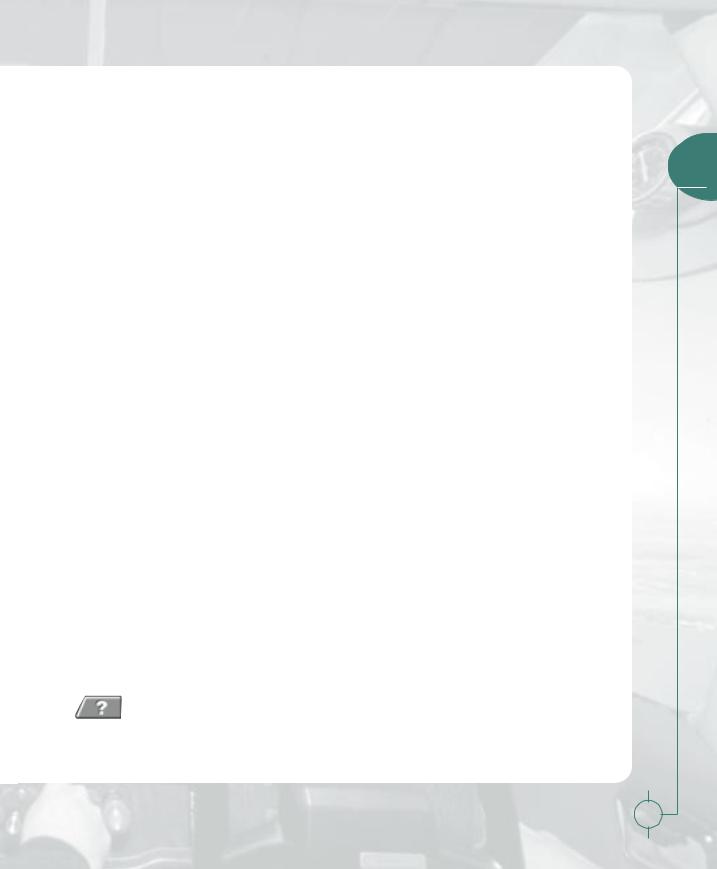
Help While You’re Flying
When you’re on final approach to a short runway, |
lower the flaps. Use the onscreen assistance |
|
|
the last thing you want to do is stop everything |
described below to get the information you need |
2 |
|
and go searching for that keyboard command to |
exactly when you need it. |
||
|
|
|
|
|
|
|
|
The Kneeboard |
Many real-world pilots use a “kneeboard” to hold reference material they |
|
|
|
need during a flight. In some cases, the kneeboard is literally strapped to the |
|
|
|
pilot’s thigh for easy access. The Flight Simulator 2000 “kneeboard” is |
|
|
|
accessible from the Aircraft menu or by pressing F10. It has four tabs: |
|
|
|
· Key Commands: A list of the most important Flight Simulator 2000 |
|
|
|
keyboard commands. |
|
|
|
· Checklists: A series of checklists for the aircraft you’re currently flying, |
|
|
|
one checklist for each phase of flight. |
|
|
|
· Reference: Useful aircraft-specific data, such as performance tables. |
|
|
|
· Notes: Notes you write yourself. |
|
|
|
Each tab of the kneeboard is customizable. For more information, see |
|
|
|
Simulator Help, described on page 8. |
|
|
Instrument Panel Labels |
To learn the name of an instrument or control in the cockpit, just hold the |
|
|
|
mouse pointer over the item—a label will appear. |
|
|
“What’s This?” Help |
To learn more about any item in the cockpit, right-click it and choose What’s |
|
|
|
This? from the pop-up menu that appears. |
|
|
|
|
|
|
Help in Dialog Boxes
You’ll use dialog boxes to set options such as |
box or step-by-step assistance for everything |
flight location, weather, and aircraft settings. Use |
from choosing an aircraft to using the Global |
Help to get information about any item in a dialog |
Positioning System (GPS). |
Screen Labels |
Hold the mouse pointer over any item in a dialog box, and a short, |
|
|
descriptive name appears. |
|
“What’s This?” Help |
To learn more about any item in a dialog box, right-click it and choose |
|
|
What’s This? from the pop-up menu that appears. |
|
Button |
Click the ? button in any dialog box to see a Help topic that explains |
|
how and why to use the screen. |
||
|
||
|
|
F i n d i n g I n f o r m a t i o n |
|
|
9 |
|
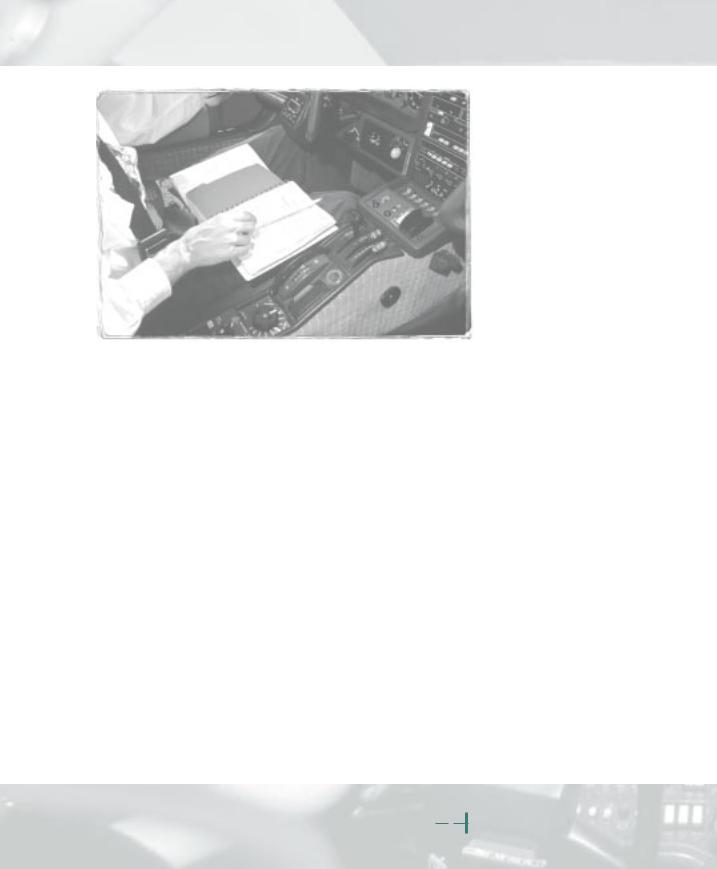
Further Information and
Assistance
The Flight Simulator 2000 Web site contains news, tips, articles, reference material, and links to other interesting simulation and aviation sites. You can connect to the Flight Simulator 2000 Web site from the Help menu, or type the following URL into your Web browser: http://www.microsoft.com/games/fsim
The Flight Simulator 2000 Readme file contains late-breaking information about Flight Simulator. It’s a good idea to read the Readme file to check for any known compatibility problems with hardware you’re using. You can find the Readme file in the Flight Simulator folder on your hard drive.
If you’re having problems running Flight Simulator 2000, you can obtain product support by using the services described in Appendix D, “Microsoft Product Support Services.”
|
10 |
|
|
|
M i c r o s o f t |
|
|
|
|
|
|
F l i g h t S i m u l a t o r 2 0 0 0 |
||||||||||||||||||||||||||
|
|
|
|
|
|
|
|
|
|
|||||||||||||||||||||||||||||
|
|
|
|
|
|
|
|
|
||||||||||||||||||||||||||||||
|
|
|
|
|
|
|
|
|
|
|
|
|
|
|
|
|
|
|
|
|
|
|
|
|
|
|
|
|
|
|
|
|
|
|
|
|
|
|
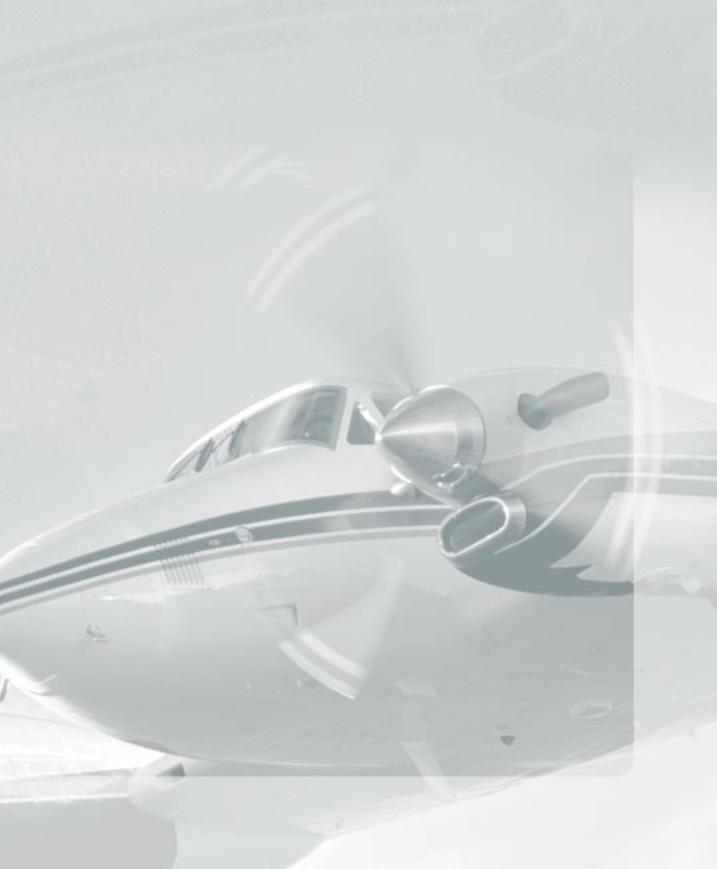
Exploring
the Features
chapter three3
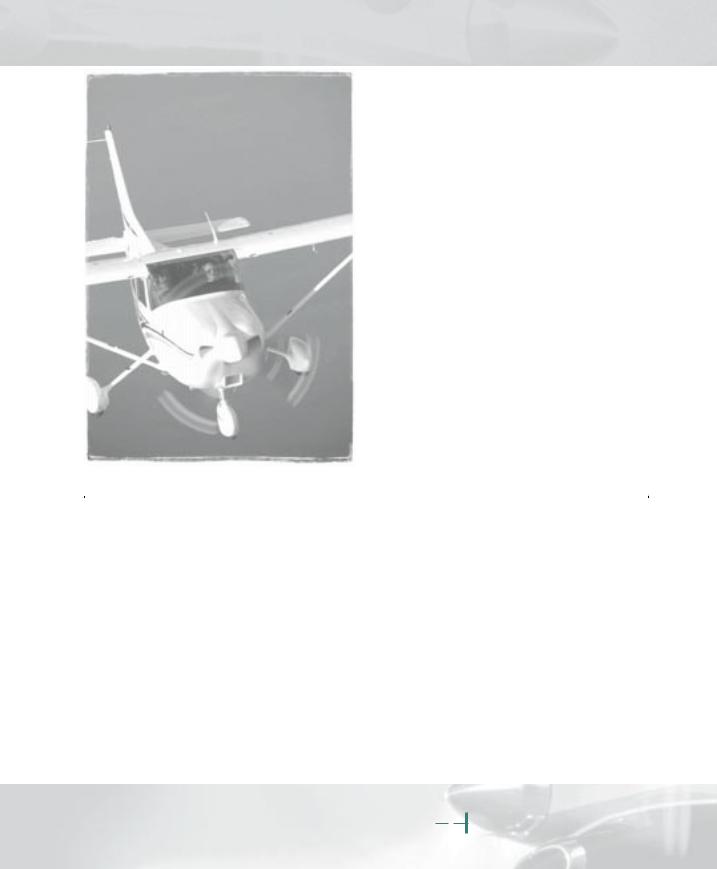
In many ways, Microsoft® Flight Simulator 2000 is even better than reality—with just a few clicks of the mouse, you can instantly change your aircraft, location, and the weather. In this chapter, we’ll take a look at these options and many other features you should know about.
To learn more about all these features, see the Simulator Help section of the onscreen Help. For an overview of any dialog box, click the ? button at the bottom of the dialog box. For an explanation of a specific item, right-click it and choose What’s This? from the pop-up menu that appears.
Aircraft
When you start Flight Simulator, by default you’ll be flying the Cessna Skylane 182S. Whether you’re on the ground or in the air, you can easily switch to another aircraft or change options that affect the aircraft you’re flying.
Feature |
Description |
Command |
|
Select Aircraft |
See pictures, descriptions, and specifications for each |
On the Aircraft menu, click Select |
|
|
aircraft in the Flight Simulator 2000 fleet, and select |
Aircraft. |
|
|
the one you want to fly. |
|
|
Fuel |
Change the amount of fuel in each tank to change |
On the Aircraft menu, click Fuel. |
|
|
your aircraft’s weight, performance, and range. |
|
|
Realism Settings |
Quickly set the realism of your Flight Simulator 2000 |
On the Aircraft menu, click |
|
|
experience using sliders, or manually select specific |
Realism Settings. |
|
|
realism options that affect: |
|
|
|
· the aircraft’s flight characteristics |
|
|
|
· the instruments and lights |
|
|
|
· the engines and propeller |
|
|
|
· |
crashes and damage |
|
|
· |
the flight controls |
|
System Failures |
Set failures for instruments, systems, and radios |
On the Aircraft menu, click System |
|
|
(either randomly or for a specific instrument) to make |
Failures. |
|
|
your Flight Simulator 2000 flights more realistic and |
|
|
|
challenging. |
|
|
|
|
|
|
|
12 |
|
|
|
M i c r o s o f t |
|
|
|
|
|
|
F l i g h t S i m u l a t o r 2 0 0 0 |
||||||||||||||||||||||||||
|
|
|
|
|
|
|
|
|
|
|||||||||||||||||||||||||||||
|
|
|
|
|
|
|
|
|
||||||||||||||||||||||||||||||
|
|
|
|
|
|
|
|
|
|
|
|
|
|
|
|
|
|
|
|
|
|
|
|
|
|
|
|
|
|
|
|
|
|
|
|
|
|
|
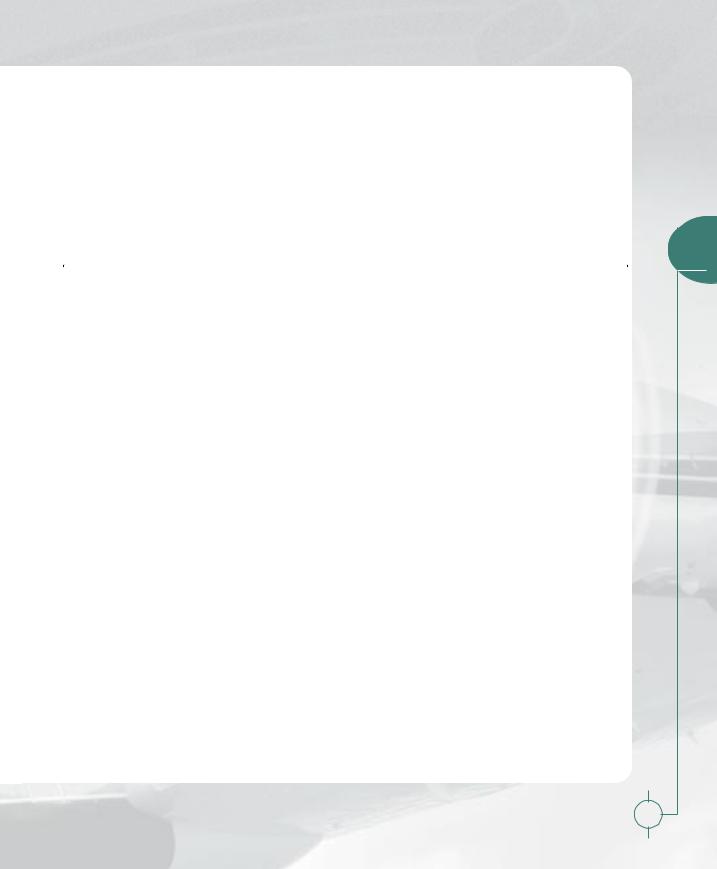
Views and Windows
You can use the features on the Views menu to see the things you’d see from the cockpit of a real airplane—and more. Different views serve different purposes—experiment with them to find your favorites. Use your joystick’s hat switch (or use key commands) to “turn your head” within
a view.
To learn more about using views and windows, see the Simulator Help section of Help. For a list of view-related key commands, see the back cover of this book. You can easily assign your favorite views to joystick buttons or your own custom key commands.
|
|
|
3 |
|
Feature |
Description |
Command |
||
|
||||
Cockpit View |
See the world as a pilot usually does, over the |
On the Views menu, point to View |
|
|
|
instrument panel. This is the default view. |
Mode, and then click Cockpit. Or, |
|
|
|
|
press S to cycle through Cockpit, |
|
|
|
|
Tower, Track, and Spot Plane views. |
|
|
Tower View |
See yourself from the control tower window. |
On the Views menu, point to View |
|
|
|
|
Mode, and then click Tower. Or, |
|
|
|
|
press S to cycle through Cockpit, |
|
|
|
|
Tower, Track, and Spot Plane views. |
|
|
Track View |
Track another aircraft from your cockpit. Available |
On the Views menu, point to View |
|
|
|
only in multiplayer flight. |
Mode, and then click Track. Or, |
|
|
|
|
press S to cycle through Cockpit, |
|
|
|
|
Tower, Track, and Spot Plane views. |
|
|
Spot Plane View |
Watch your aircraft from a spot plane that you can |
On the Views menu, point to View |
|
|
|
reposition. |
Mode, and then click Spot Plane. |
|
|
|
|
Or, press S to cycle through Cockpit, |
|
|
|
|
Tower, Track, and Spot Plane views. |
|
|
|
|
To jump to Spot Plane view directly |
|
|
|
|
from Cockpit view, press Shift+S. |
|
|
Top-down View |
A bird’s eye view of the earth beneath your aircraft. |
On the Views menu, point to View |
|
|
|
|
Mode, and then click Top-down. |
|
|
Secondary Instrument |
Display secondary instrument panel windows to view |
On the Views menu, point to |
|
|
Panel Components |
radios, GPS, throttle quadrants, and other cockpit |
Instrument Panel, then click one of |
|
|
|
items. |
the panel components to display it. |
|
|
|
|
|
|
E x p l o r i n g t h e F e a t u r e s |
|
|
13 |
|
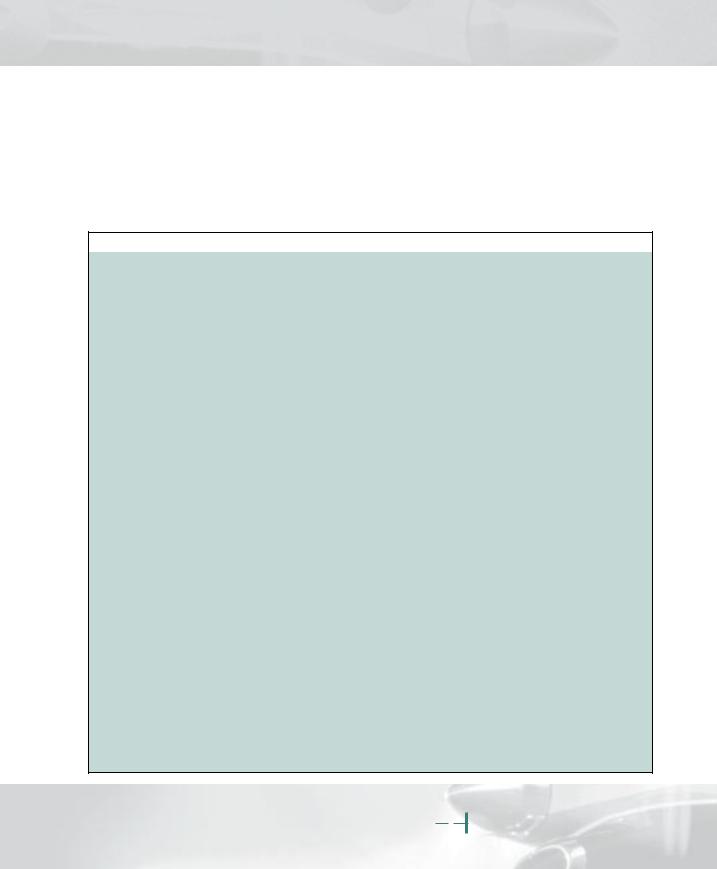
Flight Planning and
Navigation
Flight Simulator 2000 starts with your Cessna 182S on the ground at the end of runway 36 at Merrill C. Meigs Field in Chicago. After you get to know your way around the city, you’ll probably want to try flying somewhere else. You can
instantly reposition your aircraft to a new location on the ground or in the air, or plan an entire flight. Flight Simulator 2000 has many new features that simplify flight planning and navigation.
|
Feature |
Description |
Command |
|
|
|
Go to Airport |
Position your aircraft on a specific runway at any of |
On the World menu, click Go To |
|
|
|
|
more than 20,000 airports. If you don’t know an |
Airport. |
|
|
|
|
airport’s name or alphanumeric identifier, you can |
|
|
|
|
|
search for it by geographical area. |
|
|
|
|
Map View |
Look at airports, navigational aids, airways, airspace, |
On the World menu, click Map |
|
|
|
|
general geographical information, and the course |
View. |
|
|
|
|
you’ve been flying. You can enter your desired |
|
|
|
|
|
latitude, longitude, altitude, heading, and airspeed, or |
|
|
|
|
|
drag the aircraft symbol across the map to reposition |
|
|
|
|
|
it. Clicking on airports and navigational aids displays |
|
|
|
|
|
information about them. |
|
|
|
|
GPS (Moving Map) |
Navigate the modern way, directly from waypoint (a |
On the Views menu, point to |
|
|
|
|
point of reference along your route) to waypoint, |
Instrument Panel, then click GPS. |
|
|
|
|
using a Global Positioning System (GPS) receiver |
|
|
|
|
|
displayed in its own window. |
|
|
|
|
Flight Planner |
Create or load a VFR or IFR flight plan. Define your |
On the Flights menu, click Flight |
|
|
|
|
own route or select auto-routing via: |
Planner. |
|
|
|
|
· |
direct GPS |
|
|
|
|
· |
low altitude airways |
|
|
|
|
· |
high altitude airways |
|
|
|
|
· |
VOR to VOR |
|
|
|
Navigation Log |
View the details of your flight plan. Information |
On the Flights menu, click |
|
|
|
|
provided for each leg includes: |
Navigation Log. |
|
|
|
|
· |
altitude |
|
|
|
|
· |
true airspeed |
|
|
|
|
· |
magnetic heading |
|
|
|
|
· |
estimated groundspeed |
|
|
|
|
· |
fuel consumption |
|
|
|
|
· |
time en route |
|
|
Slew Control |
Rapidly change your aircraft’s attitude, location, or |
|
altitude without actually flying in real time. A great |
|
way to check out the scenery. |
Press Y. Or, on the Aircraft menu, click Slew Control.
|
14 |
|
|
|
M i c r o s o f t |
|
|
|
|
|
|
F l i g h t S i m u l a t o r 2 0 0 0 |
||||||||||||||||||||||||||
|
|
|
|
|
|
|
|
|
|
|||||||||||||||||||||||||||||
|
|
|
|
|
|
|
|
|
||||||||||||||||||||||||||||||
|
|
|
|
|
|
|
|
|
|
|
|
|
|
|
|
|
|
|
|
|
|
|
|
|
|
|
|
|
|
|
|
|
|
|
|
|
|
|

Weather
From a clear blue sky to one filled with clouds, wind, turbulence, rain, freezing rain, hail, snow, lightning, and thunderstorms, Flight Simulator 2000 gives you as much control over the weather conditions as you want. For the ultimate in
realism, you can download the latest real-world weather provided by Jeppesen DataPlan, and have those conditions automatically recreated in Flight Simulator.
Feature |
Description |
Command |
|
|
|
|
|
3 |
|
Real-World Weather |
Download the current real-world weather conditions |
On the World menu, click Weather, |
||
|
and forecast winds aloft for thousands of weather |
and then click the Real-World |
||
|
|
|||
|
reporting stations. Flight Simulator automatically |
Weather button. |
|
|
|
connects your computer to a server on the MSN™ |
|
|
|
|
Gaming Zone, downloads the real-world conditions, |
|
|
|
|
and then recreates them in Flight Simulator. |
|
|
|
Basic Weather |
Set general levels for clouds, precipitation, visibility, |
On the World menu, click Weather. |
|
|
|
and the wind’s strength and direction. You can set |
|
|
|
|
weather for the entire Flight Simulator 2000 world, or |
|
|
|
|
for individual reporting stations as displayed on a |
|
|
|
|
map. |
|
|
|
Advanced Weather |
Gain even more control over the weather you fly |
On the World menu, click Weather, |
|
|
|
through. You can define individual layers of weather, |
then click the Advanced Weather |
|
|
|
each with its own: |
button. |
|
|
|
· |
cloud type and coverage |
|
|
|
· |
icing and precipitation |
|
|
|
· |
wind speeds, gusts, turbulence, and shear strength |
|
|
|
· |
temperature, dew point, and pressure |
|
|
|
· |
visibility |
|
|
E x p l o r i n g t h e F e a t u r e s |
|
|
15 |
|

Videos and Logging
While real-world pilots have to carry cameras and |
Simulator 2000 you can track your flight time and |
||
journals to memorialize their flights, in Flight |
review your performance automatically. |
||
|
|
|
|
Feature |
Description |
|
Command |
Flight Video |
Record “videos” of your flights to impress your |
On the Options menu, click Flight |
|
|
friends. |
|
Video. |
Instant Replay |
Replay the last portion of flight at any time and watch |
On the Options menu, click Instant |
|
|
the drama unfold at any speed and from any view. |
Replay. |
|
Logbook |
Track your Flight Simulator flight time, either |
On the Options menu, click |
|
|
automatically or manually. |
|
Logbook. |
|
|
|
|
Flight Photograph |
Take an aerial snapshot for your electronic |
Press the PRINT SCREEN key on |
|
|
“scrapbook.” |
|
your keyboard and then paste the |
|
|
|
image into any graphics program. |
|
|
|
|
Simulator Settings
Some Flight Simulator settings are maintained from one session to another. Here are some of the most useful. For complete documentation of every
menu item and dialog box, see the Simulator Help section of the onscreen Help.
Feature |
Description |
Command |
Control Assignments/ |
Customize which keys and joystick buttons do what, |
On the Options menu, point to |
Sensitivities |
and how your joystick behaves. |
Controls, then click Assignments |
|
|
or Sensitivities. |
General Settings |
Change the default Flight and other general settings. |
On the Options menu, point to |
|
|
Settings, then click General. |
Display Settings |
Configure Flight Simulator to effectively use your |
On the Options menu, point to |
|
video card and choose display options that make |
Settings, then click Display. |
|
tradeoffs between graphics quality and performance. |
|
Instrument Settings |
Change whether the airspeed indicator shows |
On the Options menu, point to |
|
indicated or true airspeed, and how radio frequencies |
Settings, then click Instrument. |
|
are displayed. |
|
International Settings |
Define the units of measurement used in various |
On the Options menu, point to |
|
features. |
Settings, then click International. |
Sound Settings |
Change the volume of individual sounds. |
On the Options menu, point to |
|
|
Settings, then click Sound. |
|
|
|
|
16 |
|
|
|
M i c r o s o f t |
|
|
|
|
|
|
F l i g h t S i m u l a t o r 2 0 0 0 |
||||||||||||||||||||||||||
|
|
|
|
|
|
|
|
|
|
|||||||||||||||||||||||||||||
|
|
|
|
|
|
|
|
|
||||||||||||||||||||||||||||||
|
|
|
|
|
|
|
|
|
|
|
|
|
|
|
|
|
|
|
|
|
|
|
|
|
|
|
|
|
|
|
|
|
|
|
|
|
|
|
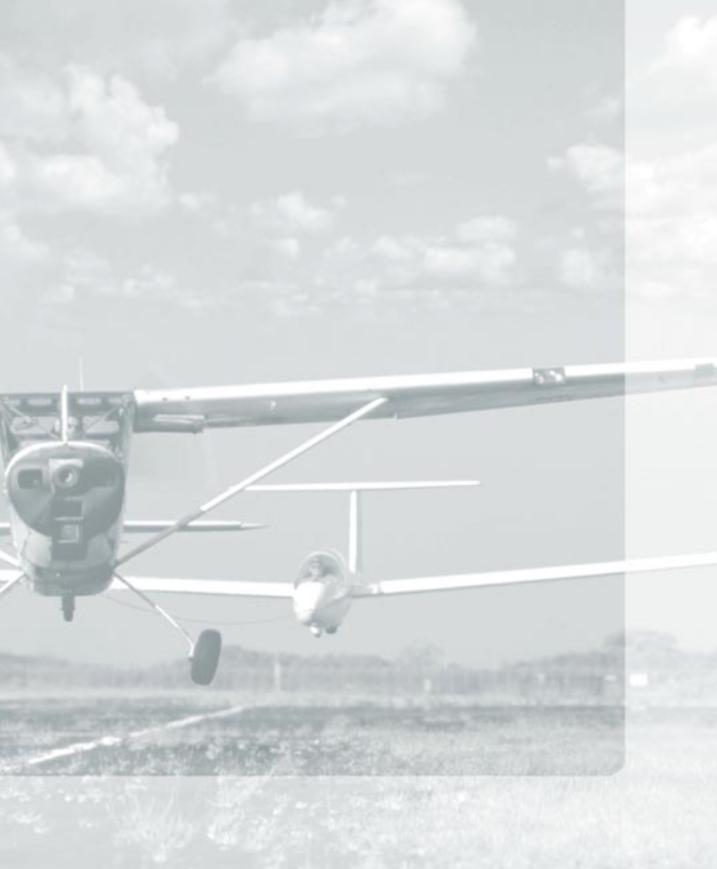
Having
Some Fun
4four chapter

For fledgling and veteran Flight Simulator pilots alike, there are many fun and challenging activities available. Not only can you learn to fly with the help of expert instructor Rod Machado, but you can extend that passion for flight by completing the curriculum for Flight Simulator pilot certificates and ratings. If you just want to get in the cockpit and get off the ground, you can
visit interesting destinations, view spectacular scenery, fly a new plane or helicopter, or even fly with friends. There are numerous possibilities, whatever your skill level.
The following table offers some ideas for having fun with Microsoft® Flight Simulator 2000.
Type of Activity |
Description |
Learn to Fly and Get Certified |
Study the Tutorials created by expert flight instructor Rod |
|
Machado, and then fly the Lessons and Checkrides to earn |
|
Flight Simulator certificates and ratings. |
Take a Fun Flight |
Choose from a variety of interesting flights in locations |
|
throughout the world. |
Check Out Cool Scenery |
Visit cities around the world that feature highly detailed |
|
landmarks and scenery. |
Have an Adventure |
Keep the seatbelt tight while flying one of the many heart- |
|
pounding Adventures. |
Create a Flight |
Use the Flight Planner to customize a flight of your own by |
|
selecting the aircraft, weather, and airports for your flight. |
Fly a Sailplane |
Challenge yourself to stay aloft in a sailplane. Practice thermal |
|
and ridge soaring at some great sailplane locations. |
Fly a Helicopter |
Try flying a helicopter. You’ll have to stay busy just to keep it |
|
upright. |
Make a Movie |
Turn on the video recorder and make a movie of one of your |
|
flights. Then, sit back and watch yourself in action. |
Perform Aerobatics |
Learn from aerobatic champion Patty Wagstaff, who’ll show you |
|
how to perform loops and rolls in the small, maneuverable |
|
Extra 300S. |
Fly with Other Pilots Online |
Challenge your Flight Simulator comrades to air races and |
|
demonstrations of flying prowess. |
Take Flight Simulator to the Limit |
Take it to the limit by flying upside down or backwards. You can |
|
also give “deadsticking” a try. |
|
|
|
18 |
|
|
|
M i c r o s o f t |
|
|
|
|
|
|
F l i g h t S i m u l a t o r 2 0 0 0 |
||||||||||||||||||||||||||
|
|
|
|
|
|
|
|
|
|
|||||||||||||||||||||||||||||
|
|
|
|
|
|
|
|
|
||||||||||||||||||||||||||||||
|
|
|
|
|
|
|
|
|
|
|
|
|
|
|
|
|
|
|
|
|
|
|
|
|
|
|
|
|
|
|
|
|
|
|
|
|
|
|
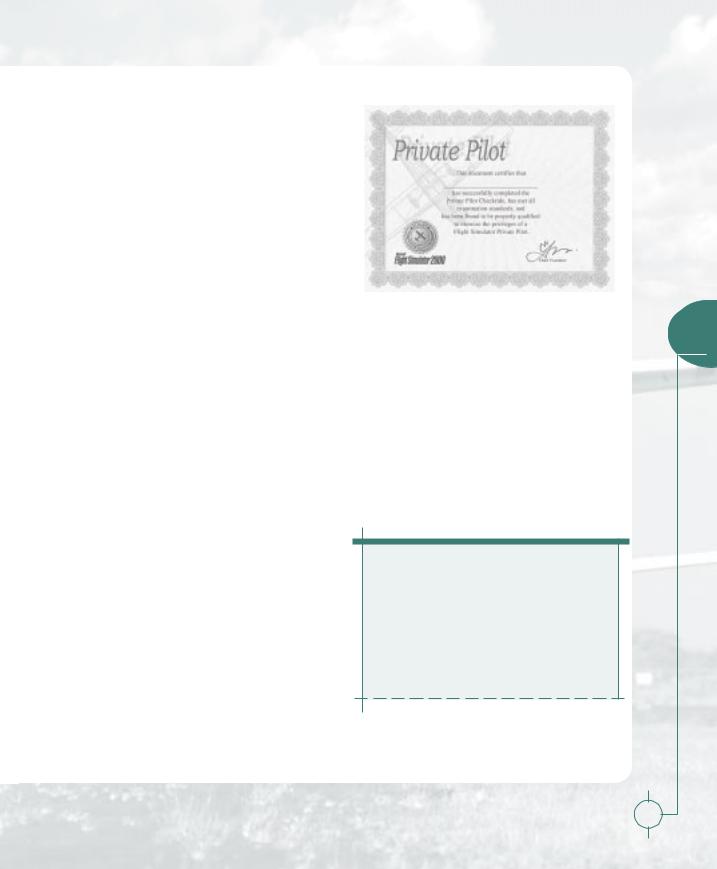
Learn to Fly and
Get Certified
If you picked up your copy of Flight Simulator because you want to learn the basics of how airplanes fly or how to navigate and understand the flight instruments, then you’ve come to the right place. In “Learning to Fly with Rod Machado” later in this book, expert flight instructor Rod Machado provides a series of tutorials to get you off the ground and back again. Want to find out if you’ve got the mettle to earn a Flight Simulator Private Pilot Certificate? In “Getting Certified” later in this book, you’ll find a complete curriculum for achieving Flight Simulator pilot certificates and ratings that parallel realworld pilot certificates.
Note that while Flight Simulator is a great complement to flight training, it’s not a substitute for instruction from a Certified Flight Instructor and is not part of an approved training program under the standards of the FAA or any other regulatory authority.
Take a Fun Flight
Choose Select Flight from the Flights menu to choose one of many intriguing flying situations we’ve provided for you. The flights in the list take place in many different locations and aircraft, and often start with you already in the air. Fly past the 1983 eruption of Kilauea, or fly through Athens, Greece, past the Acropolis. As you do your fly-by, take a quick look to your right at the Olympic Stadium, site of the first modern Olympic games.
The options don’t end there. You can take a flight |
4 |
over Beijing—past the Forbidden City and |
|
Tiananmen Square. Or, try the canyon approach |
|
to Hoover Dam and fly as close as you dare to the |
|
canyon bottom—but don’t forget to pull up when |
|
you get to the dam! Fly your way through |
|
situations in many of the major cities of the world, |
|
including Rome, Las Vegas, Tokyo, London, |
|
Chicago, Paris, and New York. The sky’s the limit! |
|
Aviation Wisdom
Don't run out of airspeed, ideas, and altitude all at the same time.
H a v i n g S o m e F u n |
|
|
19 |
|
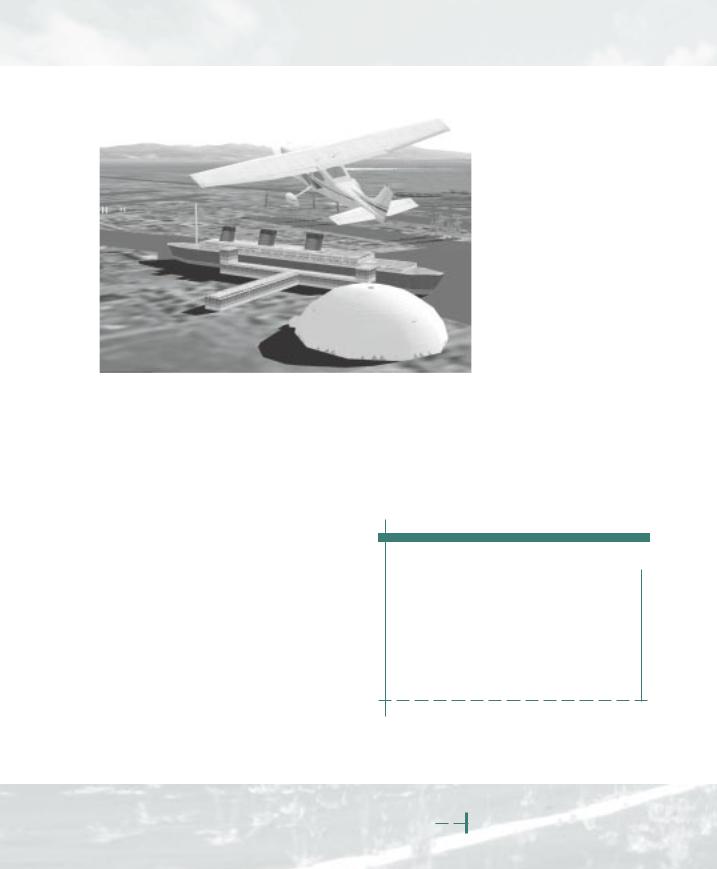
Check out Cool Scenery
Flight Simulator 2000 includes more detailed scenery than any previous version. In many of the world’s greatest cities you’ll find new scenery objects such as buildings, antennas, towers, unique skyscrapers, stadiums, and other famous landmarks.
The United States cities featuring great detail include New York, Los Angeles, San Francisco, and Chicago. In New York City, try circling the World Trade Center, the Statue of Liberty, or Yankee Stadium. Ever wonder what the La Brea tar pits look like from the air, or what the RMS Queen Mary looks like? Just enter the coordinates in your GPS or take off from Los Angeles International or Whiteman Airport and take a look.
To start your sightseeing in Europe, check out famous landmarks in Paris: the Arc de Triomphe and Jardin de Tuileries, found at either end of the Avenue des Champs Élysées. Or in London, tip a wing to the Houses of Parliament and Big Ben, the Tower of London, and the Tower Bridge. Flight Simulator opens up a world of sightseeing options for you.
Detailed Scenery in Six Cities Worldwide
Scenic flights are a great way to get started with Flight Simulator. Just hop into the airplane of your choice and fly around the cities with the most detailed scenery. We’ve included a few sightseeing suggestions along with coordinates to enter into the Map View dialog box.
Pilot-speak
$100 hamburger: Why go to your local burger shop when you can fly to another airport and get one there? Any excuse to fly!
|
20 |
|
|
|
M i c r o s o f t |
|
|
|
|
|
|
F l i g h t S i m u l a t o r 2 0 0 0 |
||||||||||||||||||||||||||
|
|
|
|
|
|
|
|
|
|
|||||||||||||||||||||||||||||
|
|
|
|
|
|
|
|
|
||||||||||||||||||||||||||||||
|
|
|
|
|
|
|
|
|
|
|
|
|
|
|
|
|
|
|
|
|
|
|
|
|
|
|
|
|
|
|
|
|
|
|
|
|
|
|
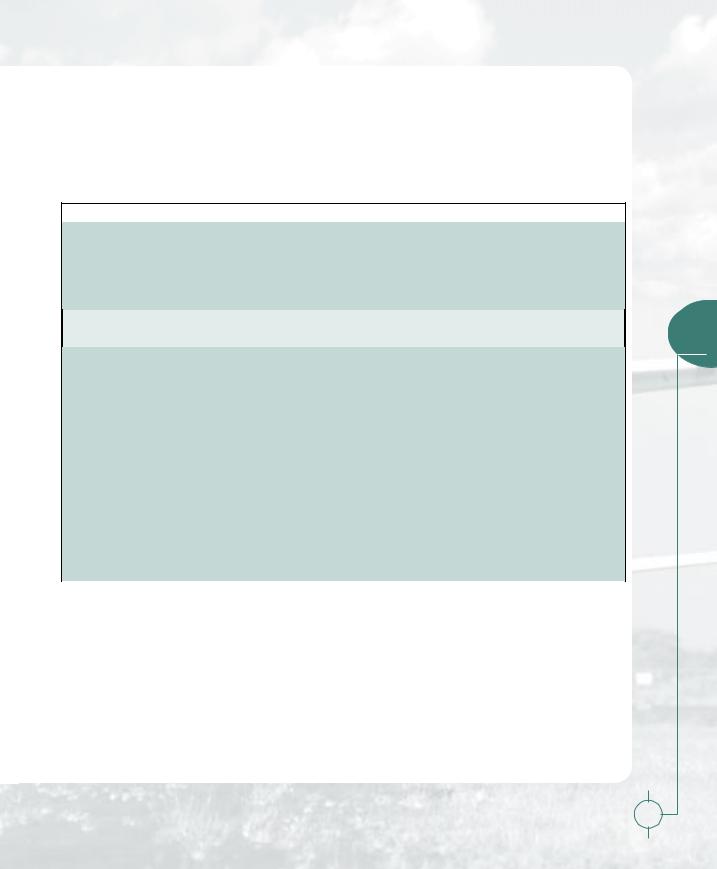
The following table lists coordinates for the landmarks mentioned in this section.
Note: The syntax for entering coordinates in the
Map View dialog box in Flight Simulator 2000 may be different than the way they’re depicted in the table. Follow the examples shown in the dialog box.
|
Landmark |
City |
Coordinates |
|
|
World Trade Center |
New York City |
40° 42’ N, 74° 00’ W |
|
|
|
|
|
|
|
Statue of Liberty |
New York City |
40° 41’ N, 74° 02’ W |
|
|
|
|
|
|
Yankee Stadium |
New York City |
40° 49’ N, 73° 55’ W |
4 |
|
|||
|
|
|
|
La Brea Tar Pits |
Los Angeles |
34° 03’ N, 118° 21’ W |
|
|
|
|
|
RMS Queen Mary |
Los Angeles |
33° 45’ N, 118° 11’ W |
|
|
|
|
|
Arc de Triomphe |
Paris |
48° 52’ N, 2° 17’ E |
|
|
|
|
|
Jardin des Tuileries |
Paris |
48° 51’ N, 2° 19’ E |
|
|
|
|
|
Houses of Parliament |
London |
51° 29’ N, 0° 07’ W |
|
|
|
|
|
Tower of London |
London |
51° 30’ N, 0° 04’ W |
|
|
|
|
|
H a v i n g S o m e F u n |
|
|
21 |
|
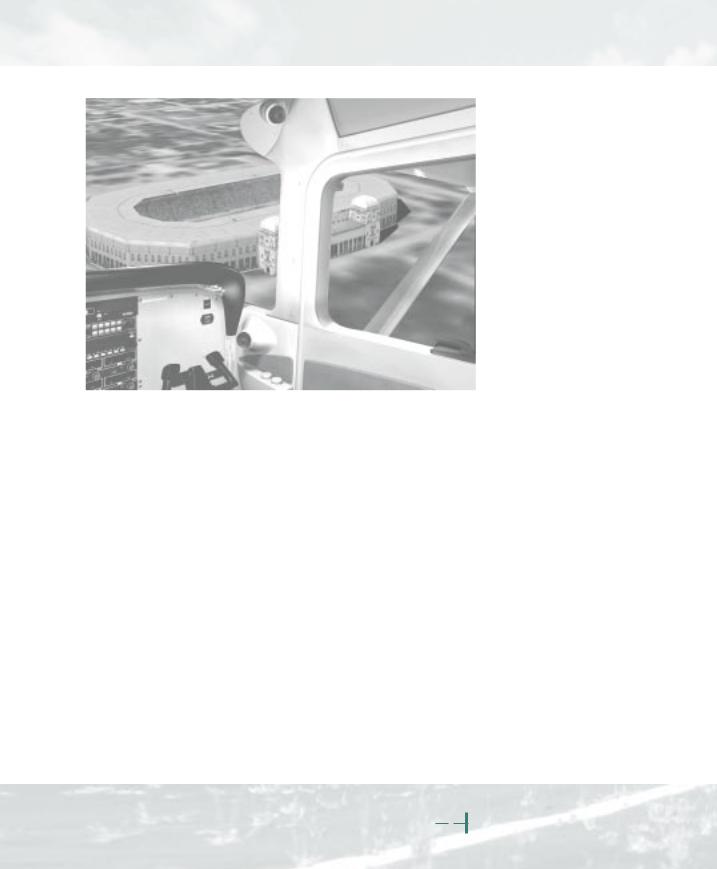
Have an Adventure
When you’re ready for a flight complete with instructions from air traffic control (ATC) and even some help from a copilot, try flying one of the many Adventures. Flight Simulator 2000 offers new Adventures that test your skills in a variety of aircraft and take you to interesting places. Adventures aren’t just guided tours: fly in under the radar to land in Red Square; beat the clock in a helicopter by landing in three different locations in a set amount of time; or land your Cessna on an aircraft carrier off the coast of San Francisco after you experience an engine failure.
Create a Flight
You can also create your own customized flights in the Flight Planner. Choose an aircraft, departure and destination airports, the date and time, weather, and so on, and you’re ready for takeoff. You can also use auto-routing or GPS, and Flight Simulator will find a route for you. Nearly every detail of a flight can be determined ahead of time. You can even download real-time weather. The following is an example of a flight you might create.
Fly Over Wembley Stadium
Perhaps you’ve always lived and breathed soccer and rather than join the fans down below, you decide to fly over Wembley Stadium in London, England, home of the Football Association (FA) Cup soccer finals. In the Flight Planner, start by choosing an aircraft, such as the Cessna Skylane 182S. Next, look up airports in the London area. For example, you can take off from Roberts airport. Set the date for game day, and plan a departure time of around noon so that you have plenty of time to make the kickoff. Finally, set the weather as clear skies with a light wind, so you’ll be able to see the match! Actually, you won’t be able to see the match, but you certainly will have the best seat in the house.
|
22 |
|
|
|
M i c r o s o f t |
|
|
|
|
|
|
F l i g h t S i m u l a t o r 2 0 0 0 |
||||||||||||||||||||||||||
|
|
|
|
|
|
|
|
|
|
|||||||||||||||||||||||||||||
|
|
|
|
|
|
|
|
|
||||||||||||||||||||||||||||||
|
|
|
|
|
|
|
|
|
|
|
|
|
|
|
|
|
|
|
|
|
|
|
|
|
|
|
|
|
|
|
|
|
|
|
|
|
|
|
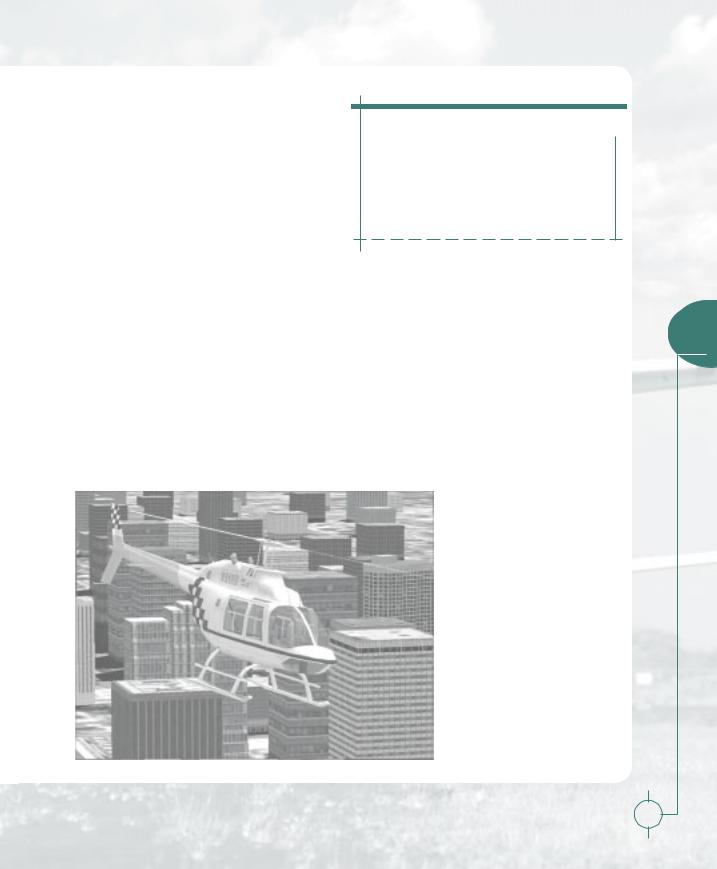
Fly a Sailplane
In Flight Simulator you can fly an aircraft that doesn’t have an engine. Try soaring in the Schweizer 2-32 sailplane and experience what it’s like to be whisked away by the wind. Actually, it’s not as easy as it sounds. The Schweizer 2-32 is an aerobatic sailplane that offers easy handling characteristics and good performance, but you still need to know where to find lift and how to use it to your advantage.
For more details about flying a sailplane, see the
Aviation Articles and Aircraft Information sections in Help.
Fly a Helicopter
Another exciting challenge in Flight Simulator is flying the Bell 206B JetRanger III. Helicopter flying demands small, smooth control inputs. Unlike airplanes, helicopters are inherently unstable. The key to understanding helicopter aerodynamics is
Aviation History
June 26, 1936. First successful helicopter flight.
remembering that a helicopter’s main rotor system is its “wings.” Because the rotors are airfoils, they produce lift much like an airplane’s wings, and they react to changes in angle of attack and stall
just like a wing. Abrupt or large movements of the 4 controls quickly lead to ever-larger oscillations
that can rapidly escalate to complete loss of control, so take it slow and easy. You can learn more about flying the JetRanger in the Aviation Articles and Aircraft Information sections of the onscreen Help.
Make a Movie
Another fun thing to do in Flight Simulator is to make a movie of yourself flying. For example, turn on the Smoke System, and then the Flight Video. Let the film run while you take off and fly in and around Paris or any of the other highly detailed cities. When you’re done, save the flight video and play it back. Change the view to Spot Plane while you sit back and watch yourself in flight. Look in Simulator Help for additional instructions.
H a v i n g S o m e F u n |
|
|
23 |
|
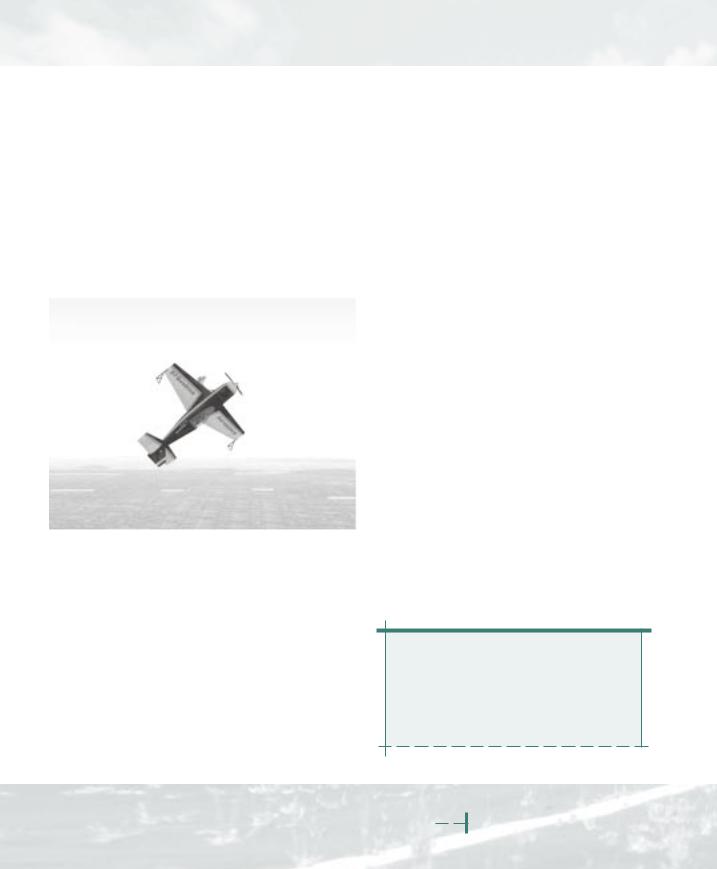
Perform Aerobatics
When you’re ready to try something more daring, take a shot at aerobatics. Flying aerobatic maneuvers gets your head out of the clouds real fast. Aerobatic maneuvers you can attempt include the loop, aileron roll, hammerhead, and Cuban Eight. Further test your skill by trying an Immelmann, a Split-S, or some spins. Enhance the experience by turning on the Smoke System and Flight Video so you can play back your flight and see yourself performing the maneuvers.
Descriptions of each maneuver are available in the Aviation Articles section of Help and highlight the abilities of Patty Wagstaff, a threetime U.S. National Aerobatic Champion and world-class air show pilot. Wagstaff performs the maneuvers in her Extra 300S, the same airplane you can choose to fly in Flight Simulator.
Background topics and videos about aerobatics are also available in the Aviation Articles section of Help.
Fly with Other Pilots Online
Time to fly with some Flight Simulator buddies? In Flight Simulator 2000 you can enjoy formation flights, aerobatic competitions, and similar activities with other Flight Simulator pilots. An ideal place to try this is on the MSN™ Gaming Zone (http://zone.msn.com). A multiplayer session can host up to eight Flight Simulator aircraft at the same time. You can also join a session as an observer, which can be a helpful learning tool.
There are a number of multiplayer activities to help you learn or just have some fun. For instance, you and your fellow pilots can take turns being the flight instructor, directing the flight and determining the altitudes and headings to use. Or, play follow-the-leader as one of you dives or climbs away from the pack. Make the game more interesting by choosing San Francisco or another highly detailed city as your training ground. You can also fly in helicopters and play hide and seek using the skyscrapers to hide from view. If you want to turn a chase into a real competition, set up air races from one location to another. Time yourselves from takeoff to landing and see who’s got the time to beat.
For more details about how to set up your multiplayer connection, see the Simulator Help section of Help.
“Mayday” is an English spelling of the latter part of the French phrase venez m’aider, “come help me.”
|
24 |
|
|
|
M i c r o s o f t |
|
|
|
|
|
|
F l i g h t S i m u l a t o r 2 0 0 0 |
||||||||||||||||||||||||||
|
|
|
|
|
|
|
|
|
|
|||||||||||||||||||||||||||||
|
|
|
|
|
|
|
|
|
||||||||||||||||||||||||||||||
|
|
|
|
|
|
|
|
|
|
|
|
|
|
|
|
|
|
|
|
|
|
|
|
|
|
|
|
|
|
|
|
|
|
|
|
|
|
|
